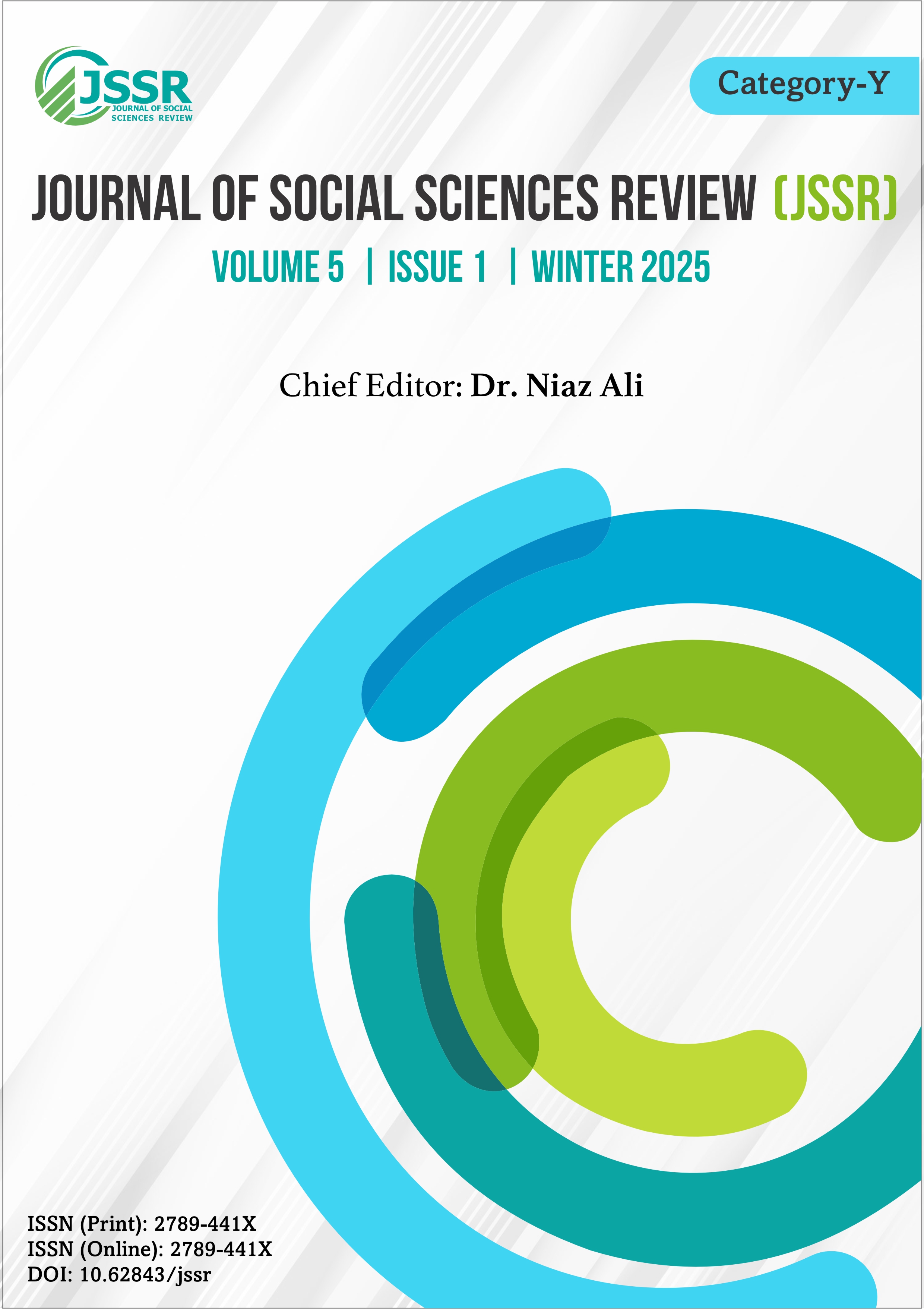The Gendered Landscape of Justice: Institutional Barriers to Women’s Khula Rights in District Courts Peshawar, Khyber Pakhtunkhwa
DOI:
https://doi.org/10.62843/jssr.v5i1.489Keywords:
Patriarchy, Legal System, Women’s Rights, Gendered Justice, Khula (Islamic Divorce)Abstract
Women seeking Khula (Islamic divorce) in Peshawar courts face systemic barriers deeply embedded within patriarchal structures and gender norms. This study critically examines the intersection of legal, social, and cultural constraints that shape women's experiences in family courts. Using a qualitative approach, the research highlights the pervasive influence of patriarchal ideologies, which manifest through familial pressure, societal stigmatization, and religious interpretations that discourage women from pursuing their legal rights. The findings reveal that the legal system itself, rather than being a neutral arbiter of justice, operates within a patriarchal framework that systematically disadvantages women. Structural barriers, including judicial biases, procedural delays, and socio-cultural intimidation, further impede women’s access to justice, often compelling them to forgo legal recourse altogether. The study draws upon feminist theories of structural oppression to analyze the ways in which institutionalized patriarchy reinforces gendered disparities in legal proceedings. It argues for urgent policy interventions and legal reforms to dismantle these entrenched barriers and ensure a more equitable legal environment for women seeking Khula.
References
Ahmed, A. (2002). The controversial recognition of a woman’s right to divorce. SZABIST Law Journal, 2, 40–46.
Ali, S., & Khalid, R. (2020). Divorce: The untapped discourse of women in Pakistan. Journal of International Women's Studies, 21(7), 109-122. https://doi.org/10.1093/lawfam/ebt004
Ali, S., & Khan, N. (2021). Cultural influence on divorced Pakistani women: Coping with stigma and social isolation. Journal of Divorce & Remarriage, 62(4), 270-286. https://doi.org/10.1080/10502556.2021.1871840
Bhasin, K. (1993). What is patriarchy? New Delhi, India: Kali for Women.
Ijaz, S. (2015). A woman's right to unilateral divorce under Islamic law. LUMS LJ, 2, 77. https://sahsol.lums.edu.pk/node/12809
Maxwell, J. A. (2012). Qualitative research design: An interactive approach (3rd Edition). United States: Sage Publications.
McKeown, M. (2021). Structural injustice. Philosophy Compass, 16(7), e12757. https://doi.org/10.1111/phc3.12757
Merriam, S. B., & Grenier, R. S. (2019). Qualitative research in practice: Examples for discussion and analysis. California: John Wiley & Sons.
Merriam, S. B., & Tisdell, E. J. (2015). Qualitative research: A guide to design and implementation. California: John Wiley & Sons.
Preamble to the Constitution of the Islamic Republic of Pakistan. (2022, May 15). Retrieved from http://www.pakistani.org/pakistan/constitution/preamble.html
Qadir, F., de Silva, P., Prince, M., & Khan, M. (2005). Marital satisfaction in Pakistan: A pilot investigation. Sexual and Relationship Therapy, 20(2), 195-209. http://dx.doi.org/10.1080/14681990500113260
Zahidi, F. (2016). Khula A woman s right to divorce with dignity. The Express Tribune. https://tribune.com.pk/story/1076496/khula-a-womans-right-to-divorce-with-dignity
Zankih, F. (2020, December 22). Divorce in patriarchal societies. Syrian Women Political Movement. https://syrianwomenpm.org/divorce-in-patriarchal-societies/
Zulqarnain, A., Zulqarnain, W., & Hashmi, N. U. (2022). Alone or on my own: A perspective on marriage from single women of Pakistani media. Global Digital & Print Media Review, 5(3), 23–35. https://doi.org/10.31703/gdpmr.2022(V-III).03
Downloads
Published
Issue
Section
License
Copyright (c) 2025 Copyright in the Journal of Social Sciences Review is retained by the author(s). Authors also grant any third party the right to use the article freely as long as its integrity is maintained and its original authors, citation details and publisher are identified.

This work is licensed under a Creative Commons Attribution-NonCommercial 4.0 International License.
SSR's Editorial Board shares the vision of providing free access to information, education, and science for everyone, thus promoting its content through an OPEN ACCESS POLICY, fulfilling the DOAJ definition of open access. The JSSR adheres to an Open Access and Copyright Licensing Policy based on the belief that making research freely accessible to the public promotes greater global knowledge sharing.
The JSSR uses the Creative Commons Attribution-NonCommercial 4.0 International License. The authors who apply and publish in JSSR consent to abide by the copyright policy set out in the Creative Commons 4.0 license (Attribution-NonCommercial 4.0 International license).
- Copyright in the Journal of Social Sciences Review is retained by the author(s).
- Authors also grant any third party the right to use the article freely as long as its integrity is maintained and its original authors, citation details and publisher are identified.
While "By 'open access' to this literature, we mean its free availability on the public internet, permitting any users to read, download, copy, distribute, print, search, or link to the full texts of these articles, crawl them for indexing, pass them as data to software, or use them for any other lawful purpose, without financial, legal, or technical barriers other than those inseparable from gaining access to the internet itself."



